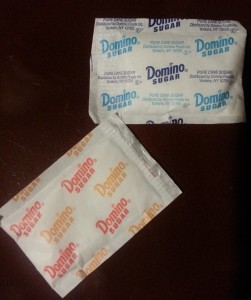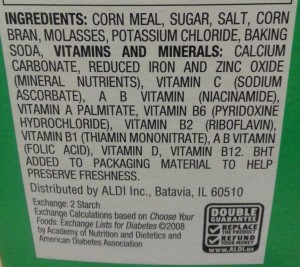Now that jelly bean and chocolate bunny season has passed, you may be getting serious about cutting back on sugar. Added sugars are often referred to as “empty calories” because they pack on calories without providing essential nutrients.
The sucrose we commonly consume as “granulated sugar” or “white sugar” is referred to as a “simple” sugar—but don’t let that name fool you. It can be anything but simple at first to understand how much sugar has been added to your food and how to stay within recommended daily amounts. There are three main challenges…
- What is the current recommendation for added sugars? The recently updated U.S. Dietary Guidelines recommend that calories from added sugars total less than 10% of your total daily calories. Most women need 1,600-2,000 calories, depending on their body weight and activity level. That means most women should only consume 160-200 calories from added sugars.
- How much sugar provides 160-200 calories? Since each gram of sugar contains 4 calories, a woman’s daily added sugar limit would be 40-50 grams. Easier to think in terms of teaspoons? Divide grams of sugar by 4, meaning the 40-50 gram limit equals about 10-13 teaspoons. Sound like plenty? Well, one can of cola packs nearly the full 10 teaspoon daily amount. And, if you start your day with a sweetened yogurt, a serving of granola, and a 16-oz flavored or blended coffee drink(PDF), you’ll be at 17 teaspoons of sugar before lunch.
 3. Sucrose is just one of many types of sugar, and, there are over 60 different names used for sugar in food ingredients. Become acquainted with common names for added sugars including sucrose, honey, molasses, raw sugar, brown sugar, fruit juice concentrates, glucose, fructose, lactose, dextrose, maltose, malt syrup, corn syrup, high fructose corn syrup, and just plain syrup.
3. Sucrose is just one of many types of sugar, and, there are over 60 different names used for sugar in food ingredients. Become acquainted with common names for added sugars including sucrose, honey, molasses, raw sugar, brown sugar, fruit juice concentrates, glucose, fructose, lactose, dextrose, maltose, malt syrup, corn syrup, high fructose corn syrup, and just plain syrup.
By paying attention to various sugar names and amounts on labels, cutting down on simple sugars will get simpler!


